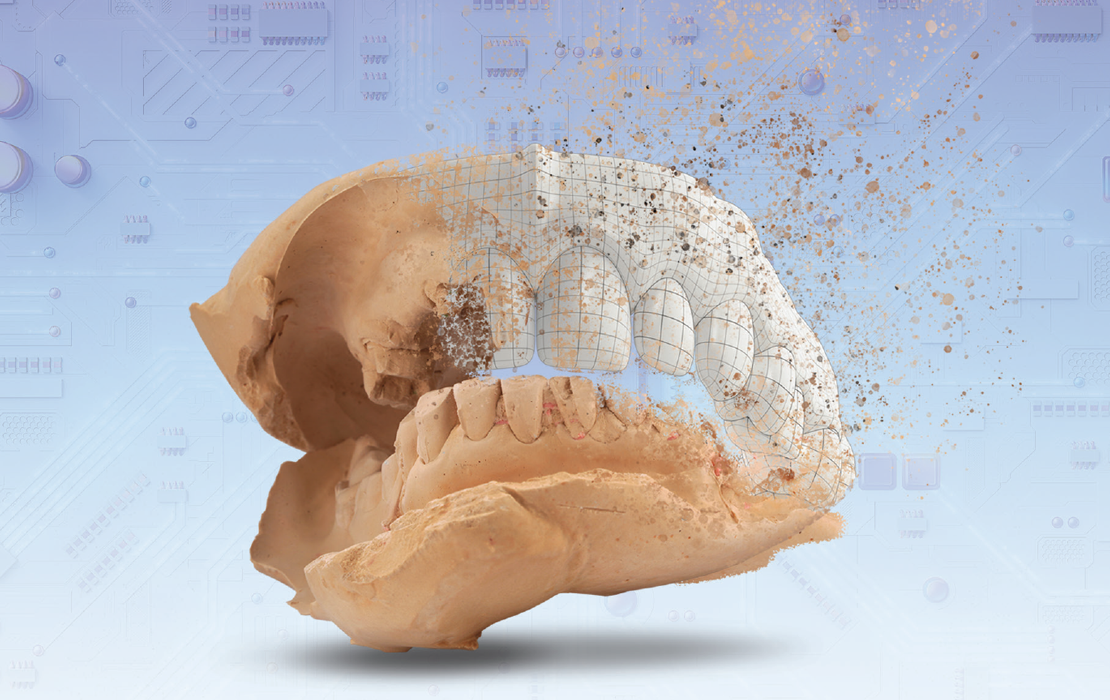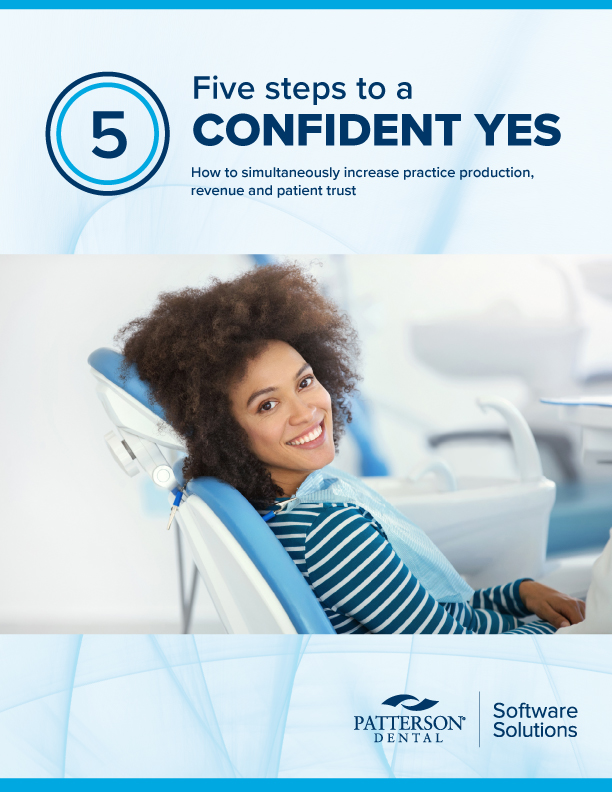From Silos to Synergy: The Rise of Connected Dentistry
How digital integration is transforming workflows, collaboration, and patient outcomes

With platforms such as digital x-rays, 3D cone-beam computed tomography (CBCT) systems, intraoral scanners, and chairside CAD/CAM, dental practices have experienced the benefits of digital dental technologies for decades. But even clinicians who adopted as many innovative platforms as possible often found themselves jumping between isolated software and hardware systems, navigating inefficient workflows, and struggling to unlock the full potential of these technologies.
With the advent of cloud computing and advancements in artificial intelligence (AI), a new era of “connected dentistry” is beginning to take shape. These platforms provide a single interface that can access everything from imaging and diagnostics to treatment planning and case presentation, to practice management and operations, even when the technologies employed by the practice come from multiple companies.
As more practices adopt digital dental solutions, and patients grow more familiar with what is possible in a modern dental practice, the benefits of working through a single, connected solution becomes more valuable to both practices and the patients they serve.
“Ultimately, for me, it’s about overcoming fragmentation,” says Max Milz, group vice president for connected technology solutions at Dentsply Sirona. “If you think about the era of digital dentistry, you have great CBCTs with a software and a PC; you have great scanners with a software and a PC; you have great implant planning on a PC; and if you mix and match, you have a whole data chaos. And you have lots of IT problems, because PCs get older.
“I think we are now entering the era of workflows, and that’s about connectivity. That’s where cloud comes into play, because it allows you to create a common platform on which these workflows can live, and the data from different imaging systems, and all scanners, and so forth, come together to provide a holistic digital record of the patient.”
THE BUILDING BLOCKS OF CONNECTED DENTISTRY
Modern connected practices rely on several core technologies that, when combined, create a comprehensive and efficient clinical environment. Digital imaging and diagnostics form the foundation. Intraoral scanners, CBCT, and AI-driven radiographic interpretation now provide highly detailed images and automated analysis. When a cloud-based platform such as DS Core from Dentsply Sirona becomes a hub for all of the information these solutions capture, dental practices gain new efficiencies and opportunities to enhance patient care.
Practice management has also undergone a transformation. Cloud-based platforms connect scheduling, billing, and clinical records, offering providers and patients secure access from virtually anywhere. When imaging and treatment planning systems work in concert with practice management solutions, practices benefit from automated data synchronization and eliminate time-consuming tasks while keeping patient and practice records up to date and accessible from anywhere.
Milz notes that having data on a secure cloud platform, allows practices to access the latest dental software without having to manually update their systems. Cloud-based platforms also make it possible to tap into the computing power required to bring AI-driven automations and analysis into multiple workflows, increasing operational efficiency and providing end-to-end data-driven clinical support. It’s important for these solutions to exist in the cloud where they can access the large-scale computing power required by AI and the workflows it enables. “AI for me is about a tool being embedded in a workflow that makes a certain step faster, better, easier, more efficient, whether it’s planning, diagnosing, scanning, or whatever,” Mr. Milz explains. “AI is the agent that makes you smarter.”
THE BENEFITS OF CONNECTED TECHNOLOGIES
The impact of connected dentistry reaches every corner of the dental ecosystem. For clinicians, integrated technologies improve efficiency, reduce errors, and allow for more comprehensive treatment planning. Dental laboratories and specialists benefit from streamlined collaboration, enabling them to deliver more predictable results with fewer delays.
Patients gain a transparent, convenient experience that fosters satisfaction and trust. Practices themselves can leverage the wealth of data produced by connected systems to make informed decisions about staffing, resource allocation, and long-term strategy. Having consistent connected workflows offer benefits to patients, practices, and the practice’s staff.
“It makes the whole workflow much more seamless, so for the patient, the first thing is their chair time goes down,” says Shivi Gupta, DMD, who practices at Scripps Rock Dental in San Diego where she serves as a beta tester for the DS Core platform. “When we have these connected workflows, you can have a new team member come in and catch on so quickly because the workflows are very easy to follow. That really helps with our patients because they have a better and more consistent experience because everybody knows what they’re doing.”
“The moment you go into the world of connected dentistry and really follow a streamlined, seamless workflow, you reduce the number of steps,” adds Rainer Seemann, DMD, PhD, MBA, who serves as vice president global clinical research and chief clinical officer for Dentsply Sirona. “You sometimes, or very often, even reduce the number of appointments, and that’s what counts.”
THE BARRIERS TO WIDER ADOPTION
Despite its promise, industry-wide adoption of connected dentistry faces several key obstacles. Dr. Gupta notes 3 key obstacles connected dentistry must overcome: understanding of the technology, ease of use of connected platforms, and affordability of digital dental technologies. Mr. Milz agrees that all three barriers represent challenges to wider adoption of connected dentistry, but he also sees how they can be overcome.
“Understanding you can change with education—explaining why it makes sense why you should do it. Ease of use is something you can get past with better so ware, better usability, and using AI to simplify workflows. Affordability you can change by differentiating what is it you really want to do, and giving people a pathway to grow into the technology. I think on we’re making rapid progress on all 3 of these, but of course, change always takes its time.”
While these barriers remain significant, Dr. Gupta believes anyone who feels overwhelmed by the prospect of connected dentistry will be relieved a er they begin to go digital and connect their technologies. Managing multiple isolated technology platforms is a complex endeavor, but once these systems are linked through a cloud-based platform, everything gets easier to use.
“It just simplifies my whole workflow,” Dr. Gupta says. “Plus, we actually don’t need to do any updates. It’s all done for us in the cloud, so it makes working with our digital technologies simpler. Also what’s really nice is if there’s ever any issues in our practice, now we have the support right through that same connection. Not having to wait for somebody to come to my practice if I have some type of issue that myself or my team can’t handle is invaluable.”
THE FIRST STEPS TOWARD CONNECTION
Connected dentistry is more than a passing trend; it represents a strategic shift toward smarter, patient-centered care. While there are numerous digital dental technologies available, Mr. Milz says building a connected practice needs to start with imaging, both 2D x-rays and intraoral scanners. Then a practice can add CBCT imaging to take a connected approach to more complex implications and indications. Then a practice, if they choose to, can add a mill or a printer to facilitate chairside production of restorations and appliances. Dr. Seeman notes that a practice will get the most out of connected dentistry if they work up to it by adopting and connecting one solution at a time.
“I think you have to find an entry point,” he says. “You will not just throw this on a dental practice and say, ‘now everything is connected.’ It’s a little bit like going into an Apple store and saying, ‘Hey, I need everything.’ Nobody does that. You start with one device, and that kind of brings you into the world, and then you connect the next one, the next one, the next one.”
Dr. Gupta adds that to really make use of the potential of a platform such as DS Core, it is important to integrate digital technologies into every patient visit. Once the patient’s imaging and clinical data is in the cloud, it becomes easier to not only diagnose and plan a course of treatment, but also to explain that plan to patients or share that plan with specialists, dental labs and other partners.
“We are scanning every patient and that digital model is going up to the cloud. My hygienists are using it to show the patients anything they need to show them,” Dr. Gupta says. “The biggest thing is the diagnosis and the treatment planning. The only way patients are going to say yes to treatment is if they understand their treatment needs and through DS Core, I have all the imaging and records in the same place so I can go in and I can show them the problem and explain treatment to the patients in a very clear manner that they can understand.”
THE ROAD AHEAD
The future of connected dentistry points toward even deeper integration and expanded clinical capabilities that can be unlocked when a practice is ready. Ultimately, connected dentistry platforms empower dental teams to deliver care that is more collaborative, efficient, and informed by real-time data—a future in which patients and providers alike stand to benefit.
“All of this just enables us to do so much more, and I truly believe it’s what makes our patients have a better experience and also brings so much joy to the clinicians themselves,” Dr. Gupta says.



